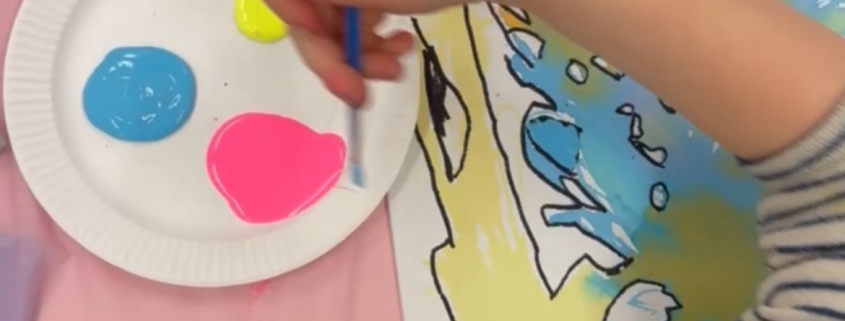Splatter, Swirl, Smile: The Unique Power of a Brush in Your Child’s Hand
Painting is a full-body, full-brain experience that opens up a world of creativity for kids. It engages the senses, strengthens motor skills, and encourages self-expression in ways that go far beyond the finished product. Whether your child is finger-painting a rainbow at age 2 or experimenting with watercolors in the third grade, painting offers something truly special that other activities like drawing, cutting, or sculpting don’t quite match.
Let’s break down the benefits — brushstroke by brushstroke.
Freedom of Expression
Unlike drawing, which often emphasizes precision, or scissor crafts, which follow clear boundaries, painting invites kids to explore wide, sweeping movements. There are no “wrong” brushstrokes. A tree can be purple, the sky can be stripes, and an entire story can unfold in color before a single word is spoken. Painting encourages risk-taking and removes the pressure to stay inside the lines — literally and figuratively. “When I started to paint, I felt transported into a kind of paradise,” said Henri Matisse. “Starting to paint, I felt gloriously free.”
Sensory-Rich Brain Play
Painting is deeply tactile, especially for younger kids. They receive rich sensory feedback in feel of the brush, the glide of paint across paper, and even the opportunity to get a little messy. Studies have shown that when kids engage in open-ended, sensory-rich activities like painting — especially those involving texture and layering — they build neural pathways that support flexible thinking, planning, and creative problem-solving across domains. Hands-on creative play also strengthens executive function skills, including working memory and cognitive flexibility. And research in visual arts education shows a clear link between art-making and the development of divergent thinking — the ability to come up with new ideas and solutions.
Emotional Development
Colors and shapes give kids a visual language to express complex feelings they might not have the words for yet. A child may not say “I’m overwhelmed,” but their swirling dark paint may tell you otherwise. Painting provides a safe, soothing outlet—especially when it’s done without judgment or a focus on “what it’s supposed to be.” As Pablo Picasso once said, “Painting is a blind man’s profession. He paints not what he sees, but what he feels, what he tells himself about what he has seen.” That freedom to express what lives inside — not just what’s visible in front of them — is what makes painting such a powerful tool for emotional and creative growth.
Confidence and Self-Esteem
Unlike tasks that require a “right” answer, painting celebrates individuality and originality. According to a study published in Art Therapy: Journal of the American Art Therapy Association, children who engage in creative art-making, such as painting, often show increased self-worth and a greater sense of personal achievement. When a child steps back and sees a finished piece of art, it’s not just about the outcome—it’s about the realization that they created it themselves. This tangible evidence of their abilities can reinforce their sense of competence, encouraging them to take on new challenges in other areas of life. For kids who may struggle with other forms of learning or competition, painting offers a non-judgmental space to succeed on their own terms.
Teachable Techniques at Any Age
With many different styles to try, painting is an artform that truly grows with your child. Try these:
- Finger Painting (Ages 1–3): Builds fine motor strength and introduces cause and effect.
- Blow Painting with Straws (Ages 3–6): Teaches control and introduces abstract art.
- Watercolor Resist (Ages 5–8): Layer watercolor overtop crayons or oil pastels.
- Palette Knife Painting (Ages 8–12): Experiments with texture and layering.
- Collaborative Murals (All ages): Great for sibling bonding or parent-child connection.
Want to give painting a whirl? We’re always painting at the Shine Studio in Bridgehampton. Come join us for a session and see how painting can unleash your child’s imagination and confidence.



